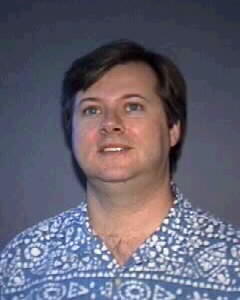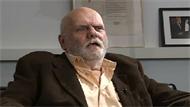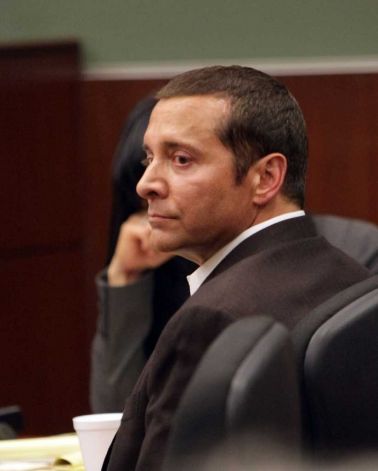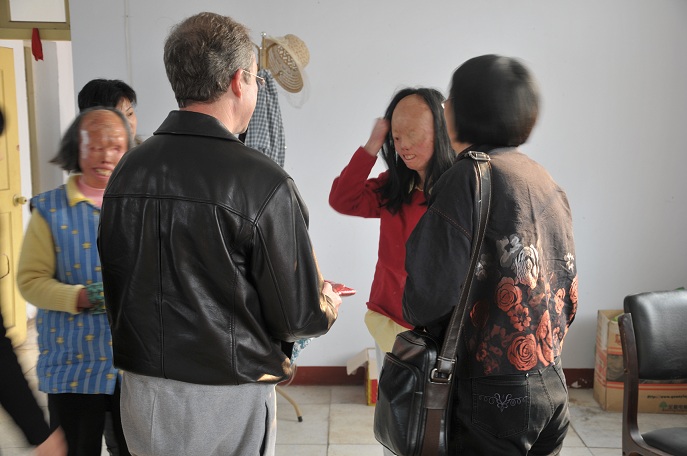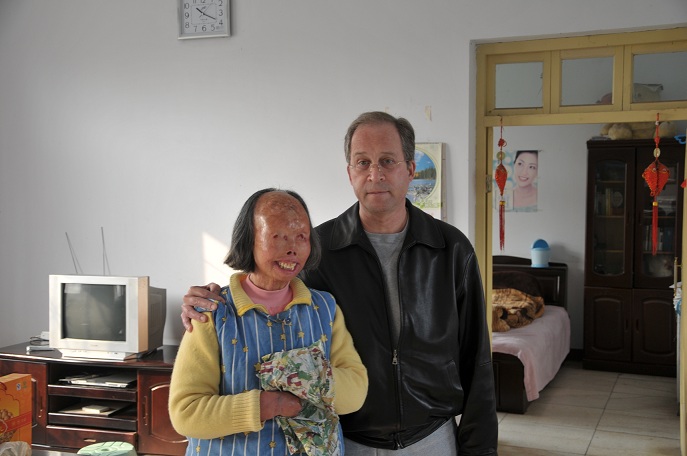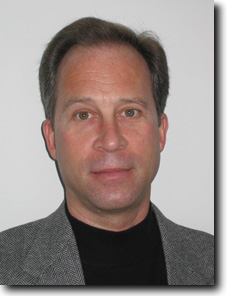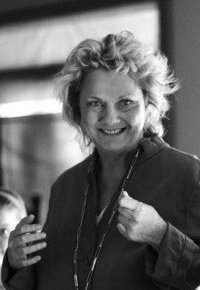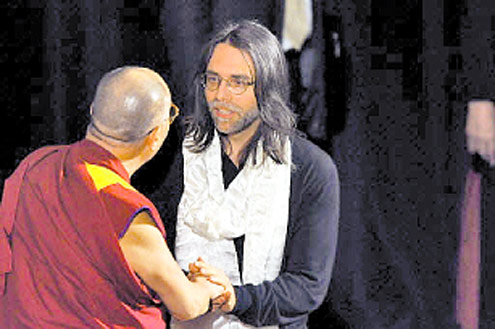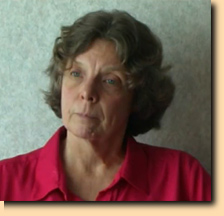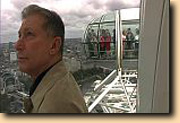Introduction
I am writing this article as a previous member of the Order of Christ Sophia (OCS) and the Center of Light (COL).When I first encountered the OCS in 1999 I found it to be a supportive and empowering organization.Over time however, I feel that the nature of the group has changed dramatically and I would now describe it as extremely destructive and dangerous. I am gravely concerned for the welfare of anyone currently involved with or considering involvement with the group and it is my hope that what I describe here will bring clarity and insight to others.
Background
I was a “student” in the OCS for several years beginning in 1999 when the organization was first founded.I later trained for the ministry and functioned as a “deacon” for 2 years, a “priest” for 8 years and then a “shepherd” (the highest level of OCS training) for 2 years. I was also a member of the board of directors for 4 years.During my time with the group I had extensive contact with its leaders and became intimately acquainted with its internal dynamics and politics.Because of my familiarity with the OCS I feel that I am in a position to offer credible testimony about the nature of the organization.
Destructive and dangerous characteristics
The destructive and dangerous characteristics of the OCS.
The remainder of this article will describe the characteristics of the OCS that I found to be most destructive and dangerous.I will divide them into four categories and discuss them separately.The four categories are:
1) The leaders of the OCS have exhibited psychologically pathological behavior.
2) The leaders of the OCS have engaged in abusive and unethical practices.
3) The OCS has become an authoritarian and tyrannical organization that encourages loyalty to the leaders of the group rather than to God.
4) Group dynamics within the OCS have created an atmosphere where members come to accept, normalize and even positively reinterpret negative practices which eventually cause severe psychological and emotional trauma including the loss of personal autonomy and identity.
Psychologically pathological behavior
The leaders of the OCS have exhibited psychologically pathological behavior.
 The OCS is led by Peter Bowes (photo left) and Clare Watts (photo lower right).Both have made claims that I feel to be delusional and have exhibited behavior that I feel represents psychosis.
The OCS is led by Peter Bowes (photo left) and Clare Watts (photo lower right).Both have made claims that I feel to be delusional and have exhibited behavior that I feel represents psychosis.
Bowes has claimed the following: to be the reincarnation of St. Peter; to be the reincarnation of St. Francis of Assisi; to have been personally instructed by the Buddha; to have received the authority and responsibility for carrying on the mission of the Church of Jesus Christ directly from St. Paul; to possess the highest consciousness of any spiritual teacher alive; to be the most trustworthy person alive; to be the recipient of an Apostolic succession derived from Jesus Christ; that the OCS is the most spiritually evolved organization of all time; that the OCS represents the second coming of Christ; that the Apocalypse will occur within the lifetime of the present generation; that only 30% of the population will survive the Apocalypse; that the OCS will play a pivotal role in bringing the post-Apocalyptic human race into a new consciousness.
Watts has claimed the following: to be the reincarnation of St. Clare of Assisi; to possess the highest consciousness of any spiritual teacher alive; to be the recipient of an Apostolic succession derived from Jesus Christ; that the OCS is the most spiritually evolved organization of all time; that the OCS represents the second coming of Christ; that the Apocalypse will occur within the lifetime of the present generation; that only 30% of the population will survive the Apocalypse; that the OCS will play a pivotal role in bringing the post-Apocalyptic human race into a new consciousness.
Bowes and Watts have also asserted that they can hear the voice of God and accurately discern Gods will through a process they call “receiving guidance.”While they maintain that all people have the inherent ability to do this, they insist that their level of enlightenment affords them the ability to know God’s will with unrivaled clarity.Furthermore, they frequently use this alleged ability to proclaim the will of God for others.
When questioned about the validity of these claims, Bowes and Watts have maintained that they represent the truth.And when criticized for the unethical and abusive nature of the behaviors that will be described below, they have insisted that they are leaders of the highest integrity.Bowes and Watts are convinced that they are messengers sent from God, that their conduct is virtuous and that their actions are divinely guided.I feel that they have both exhibited signs of serious psychological pathology.
Abusive unethical practices
The leaders of the OCS have engaged in abusive and unethical practices.
Bowes and Watts have engaged in unethical and abusive practices with appalling regularity and have persistently defended the moral fortitude of their leadership. Bowes and Watts play a central role in the “spiritual instruction” of anyone who participates in the OCS.They proclaim themselves to be “Master Teachers” and consider all others to be their “students.”Both are trained psychotherapists and it is my opinion that they are able to use their professional expertise to exploit psychological wounds and engineer a dynamic where group members become insidiously disempowered and dependent.Initial interactions with Bowes and Watts are predominantly positive and serve to engender people into continued participation.With deeper involvement, members become progressively immersed in a group dynamic that distorts their perception of ethics and reality.It is within this dynamic that Bowes and Watts become psychologically manipulative and emotionally abusive.
Such behavior is usually hidden from the public eye and occurs in private sessions.However, there have been multiple occasions where Bowes and Watts have publically harassed a group member to the point that they were reduced to tears.To date, countless people have left the OCS feeling that they experienced severe emotional and psychological trauma.Many have reported feeling extremely anxious, hopelessly depressed and profoundly disconnected from themselves and God.Several senior ministers, including some who are currently involved in the group, have reported these same sentiments including being depressed to the point of contemplating suicide.
While Bowes and Watts publicly profess a philosophy of inclusiveness and egalitarianism, behind closed doors they promote an attitude of superiority and disrespect toward humanity.People outside the OCS are often described as animals, useless and a waste of space.Bowes and Watts also insist that Christianity represents the highest form of spirituality and commonly insult the practices and practitioners of other religions.On numerous occasions they have made glaringly anti-Semitic remarks.
Friendships outside of the OCS are discouraged.Ministers are instructed to view people as potential recruits rather than as equals.Ex-members have reported being relentlessly pressured to dissolve previously meaningful relationships.This practice is evidenced by the fact that most longstanding members do not have any close external friendships.Even friendships within the OCS suffer under the weight of Bowes and Watts.As members ascend in rank they are told to stop relating to lower ranking members as peers regardless of the depth of their previous association.Bowes and Watts also inject themselves into relationships in such a way that they become the directive parties.Because of this, relationships within the OCS are in a constant state of flux and lack the autonomy of otherwise healthy fellowship.
Bowes and Watts have taken a particularly antagonistic stance toward familial relationships and have been responsible for the widespread devastation and destruction of countless families. This antagonism has occurred on multiple levels.
Bowes and Watts have been consistently adversarial in regard to the nonparticipating spouses of group members.They have often told members that their spouses were losers, negative, dark or possessed by demons.These malignments, and the many that will be described below, have been unfounded.Bowes and Watts have also frequently instructed members to cease all sexual relations with their partners and warned that such intimacy would cause them to become contaminated.In various cases they have pressured members into divorce.
Bowes and Watts have also behaved abusively toward the children of group members.Several teenage children have reported feeling verbally abused and bullied by Bowes.In one instance, the mother of a teenage boy was told that her son was spiritually lost, didn’t have a spiritual bone in his body and was going to grow up to be a date rapist.There have been multiple instances where members have withdrawn their children from the group and specifically told Bowes and Watts not to contact them only to find that Bowes had:ignored their wishes, contacted their child, told them that their parents’ decision to withdraw them from the OCS was sad and invited them to come back when they were 18.
Bowes and Watts have brutally attacked the relationships of group members with their parents and immediate families.They assert that family bonds are primitive and shallow and that true love can only be found in the spiritual family of the OCS.They describe familial relationships as being unworthy of time and attention and dissuade members from having close relationships with their relatives.Such messaging is incessant and is delivered in both obvious and surreptitious ways.Bowes and Watts spend an inordinate amount of time casting childhood experiences in an exceedingly negative light.Members are commonly told that they were neglected or abused and parents are frequently described in unduly critical and demeaning ways.Bowes and Watts have routinely guided members into meditative states and asked them to relive their most painful childhood memories.In the midst of this emotional vulnerability they have made extremely manipulative comments that have inflamed past hurts and instigated repugnance toward a members’ childhood and parents.They have told members that:there was no love in their childhood, their parents didn’t love them, their parents hated them and that they only received table scraps of love.Bowes and Watts have regularly taken their hostility to the extreme of pressuring members to completely sever ties with their families.On several occasions where a members’ parent has died they have instructed them not to attend the funeral, citing the biblical quote of “let the dead bury the dead.”Separation from family has inarguably become a part of the very fabric of the OCS and the degree to which Bowes and Watts have attacked and devastated families cannot be overstated.Most ex-members have reported feeling emotionally manipulated to the point where they treated their families in unconscionable ways.
Bowes and Watts have also adopted unethical and abusive practices regarding marriages and partnerships existent within the OCS.Bowes and Watts often arrange marriages, claiming that God has guided them to do so.Once the couple is married, they play a central role in directing the marriage.Such direction consists of requiring that each member of the couple has a greater loyalty to Bowes, Watts and the OCS than to their spouse.Bowes and Watts have publically asked ministers what they would do if their partner left the organization and expected the minister to profess organizational allegiance.Bowes and Watts also routinely direct couples in matters of physical and sexual intimacy.Typically, a couple is instructed to sleep in separate rooms for a majority of nights and to be sexually intimate a maximum of once per month.Such governance is not left to the discretion of the couples who are instead expected to obey these instructions as if they came directly from God.Those who have questioned such policies have been chastised and accused of being sex addicts or of being loyal to their primitive desire natures.Ex-members have described feeling abused in regard to sexuality and made to feel ashamed of being physically attracted to their partners.Many have stated that the influence of Bowes and Watts on their marriages was catastrophic.
Bowes and Watts also control the amount of time couples spend together and with their children.Ministers are required to spend excessive amounts of time performing ministerial duties that require late nights and early mornings.As the vast majority of ministers also hold full time jobs, many are overworked, exhausted and lack the time for leisure, exercise, outside interests and socializing.Ministers who have voiced concern over excessive work requirements have been ridiculed and accused of being lazy.In the case of married ministers, partners have very little time to devote to each other or to their children.Ministers who are parenting are directed to spend more time with OCS duties than with their children.Several ex-member parents have reported being told that it was sufficient for them to spend 15 minutes of dedicated time with their child each day.Others have reported being told not to help their children with their homework because that was the responsibility of the child’s schoolteacher.There have even been cases where a surrogate parent was assigned to a ministers’ child and that child was told to consider the surrogate to be their new source of parenting.
In recent months, several well respected and high ranking ministers left the OCS and communicated to Bowes and Watts that they had become tyrannical and abusive and that the organization had become dangerous and destructive.While these ministers were the first to openly criticize Watts and Bowes en masse, they were certainly not the first to leave the organization.A noteworthy statistic is that over 50% of those who have ever been priests in the OCS have left the group and would describe it as negative.Despite this high defection rate, Bowes and Watts have continued to abdicate responsibility.Instead they have maintained that ex-members have resigned exclusively because of flaws of their own.Moreover, they have demonized departed ministers by publically declaring that they: were possessed by demons, were agents of darkness, were riddled with fear and pride, had turned their backs on Jesus and Mary, had betrayed God, had fallen from grace, had led God’s children astray or had thrown their lives away.In one case, Watts told a departing minister that her marriage was shrouded in darkness and that any children conceived in such a marriage would be children of darkness.
Despite the group having a Code of Ethics and Whistleblower Policy that requires a formal investigation of any allegations of misconduct, no such investigation has taken place.On the contrary, Bowes and Watts have deliberately attempted to suppress dissention and have blatantly lied about the ministers who resigned and their reasons for doing so.They have also actively dissuaded members from speaking to ex-ministers.Some who voiced the desire to do so were warned against being lured into temptation.A recent technique that was used to suppress dissent was that Bowes and Watts emailed so called apology letters to select ministers who had left the group and cc’d the majority of OCS members.The content of these emails was misleading.While they were called apologies, they actually implied that the ministers had left for benign reasons and greatly downplayed any wrongdoing on the part of Bowes and Watts.It is my opinion that these emails represented an attempt at subterfuge and damage control and that Bowes and Watts used the forum of an alleged apology to circulate their own explanation for the mass defection of ministers.To further their suppressive efforts, Bowes and Watts had the email addresses of the ex-ministers blocked so that they could neither send nor reply to emails from members with an OCS email address.
There have also been various instances of financial abuses and indiscretions within the OCS.Ministers are not paid for their duties and are required to allocate large amounts of time to the OCS.A high ranking minister might spend between 15 and 30 hours per week performing ministerial duties.Not only do ministers not receive any financial compensation but they are required to contribute 10% of their gross income to the OCS.Furthermore, in order to accommodate group services, many ministers have purchased larger homes than they would have otherwise required and financed the additional expenses without any assistance.Ministers are also expected to work at bi-annual spiritual retreats at the groups retreat center. Again, they are not compensated for their work at these retreats but rather are expected to purchase their own airfare and pay full price for their attendance as well as their children’s attendance.Many ex-ministers who could not afford such expenses or who had difficulty devoting large portions of time to the OCS have reported being reproached and/or threatened with demotion.
It is also noteworthy that while all other ministers are unpaid, Bowes and Watts are each awarded a full salary with health benefits.Furthermore, when Bowes and Watts travel to the different COL locations throughout the country it has become common practice for members to collect money for their expenses.
The OCS has also solicited money both from group members and the general public under the pretense of raising funds for a temple that they claim will be dedicated to world peace.Yet Bowes and Watts have no immediate plans to construct such a temple and have instead funneled money to other construction projects designed to increase revenue.
Bowes and Watts have also displayed favoritism towards ministers who contribute the most financially and materially.Their emotional abusiveness has been greatly lessened in cases where a minister was contributing large amounts of money, covering the cost of an OCS facility or performing a key service.Those who have not been as useful to the OCS have been treated with much greater cruelty.
Finally, Bowes and Watts have commonly engaged in behaviors which have breached the confidentiality of ex-members.They have publically revealed confidential information about ex-members and have spoken about this information and the members in markedly negative ways.
Authoritarian and tyrannical organization
The OCS has become an authoritarian and tyrannical organization that encourages loyalty to the leaders of the group rather than to God.
While the OCS claims that it intends to bring individuals into a closer relationship with themselves and with God, it is my opinion that involvement with the group instead causes people to become less dependent on themselves and God and increasingly dependent on Bowes and Watts.
When the OCS was first established, group members were encouraged to cultivate a personal relationship with God and to live their lives according to what they felt God was directing them to do.Over time, however, Bowes and Watts have slowly supplanted reliance on and dedication to God with reliance on and dedication to themselves.
One of the key ways that this is accomplished is through an obsessive devotion to the process that Bowes and Watts call “getting guidance.”While the principle of seeking Gods divine will through meditation can be found in the teachings of other religions and is not inherently suspect, Bowes and Watts have perverted it in a number of ways.First, they claim that they have an unparalleled ability to discern Gods will and that they can know what Gods will is for an individual with a greater clarity than the individual themself can.Second, they require that all ministers report the guidances they receive to them for final approval.Finally, because of the powerful group dynamic that I will describe below, I believe that most ministers are actually entering into a process of intuiting the will of Bowes and Watts rather than truly seeking the will of God.
Bowes and Watts have repeatedly advertised that when they are speaking it should be assumed that God is speaking.Accordingly, it is commonly accepted that what Bowes and Watts say is the pure and clear word of God.In cases where a minister receives a guidance that is different from that apparently received from Bowes and Watts, it is assumed that the minister is incorrect.Any claim to the contrary is viewed as arrogant and the minister is chastised for committing the sins of pride and disobedience.
There have been many examples where Bowes and Watts have used the principle of guidance to manipulate a group member.In one case, Bowes and Watts attempted to pressure a minister into leaving her spouse.This minister was one of the most senior members of the OCS and had been chosen as the groups’ successor.Yet when the minister reported that the guidance she was receiving was to be faithful to her husband, Bowes and Watts asserted that she was wrong, attacked her character and threatened her with demotion.Another senior minister was informed that God wanted him and his wife to have children.When the minister reported that the guidance he was receiving was that they should not have children, he was also told that he was wrong, his character was similarly impugned and he was also threatened with demotion.There have been many other cases where a minister who sought to follow their own guidance was castigated.And many ex-members have reported being pushed into actions such as disowning their family, selling or purchasing homes, defaulting on loans, quitting jobs, beginning new careers or donating large portions of money to the OCS.Unfortunately, this list is by no means exhaustive.
Another example of the culture of obedience to Bowes and Watts can be seen in the way ministers have been instructed to council group members.Bowes and Watts recently began teaching that ministers should tell students what to do and expect their instructions to be obeyed as if they were issued by God.Ministers are directed to avoid imparting the principles of meditation involved in getting personal guidance with the rationale that only Bowes and Watts should be offering such instruction.Other examples of the exaltation of Bowes and Watts are the recent adoption of a protocol that requires group members to stand when Bowes and Watts enter a room and a ritual which involves members circling and prostrating to them as they are seated in elevated and adorned chairs.
In recent years some ministers have begun to adopt the abusive and unethical practices of Bowes and Watts. Particularly concerning is the fact that this trend applies especially to the ministers who have been appointed to lead the groups’ youth program.Elements of abuse, coercion and manipulation are increasing in the program.Some children have reported feeling bullied and insulted.Others have felt pressured to become more deeply involved in the OCS.Several have been confused and scared by teachings they received about sexuality and dating.Additionally, many of the children have begun to experience the negative repercussions of placing their self-esteem, self-image and self-direction in the hands of the programs misguided leaders.
Also concerning is the fact that due to the group dynamic described below, many otherwise well-meaning ministers are unknowingly serving as integral components of the machinery that has been so destructive to so many. Not only are they suffering themselves but they are also actively recruiting people into a malignant environment.
In summary, it is my observation that Bowes and Watts have supplanted God as the gold standard for the truth and the source of direction in members’ lives and that they have replaced God as the object of worship and reverence.Consequently, while members may claim that they are attempting to follow and worship God, I feel that they have been deluded into following the will of Bowes and Watts and worshiping them.
Group dynamics
Group dynamics within the OCS have created an atmosphere where members come to accept, normalize and even positively reinterpret negative practices which eventually cause severe psychological and emotional trauma including the loss of personal autonomy and identity.
An examination of the psychological and sociological literature will unearth considerable controversy regarding the topics of “cults,” “brainwashing” and “mind control.”Despite this contention, several landmark studies have incontrovertibly demonstrated the power of group dynamics and have been widely accepted by the academic community.The first one, commonly called “The Milgram Experiment,” was conducted by Yale University Professor Stanley Milgram.It examined the phenomenon of obedience to authority and clearly demonstrated that the vast majority of people were willing to deliver high voltage electric shocks to others if an authority figure told them to do so, even when they thought they were causing significant pain and suffering.A second experiment, known as the “Stanford Prison Experiment” was conducted by Stanford University Professor Philip Zimbardo.This study illustrated the psychological effects of being assigned the role of a prisoner or guard and demonstrated that people were willing to either perpetrate or accept psychological and physical abuse when provided with a legitimizing ideology and a social structure that supported it.An internet search of these experiments will yield many good references.Those looking for a single source can find an excellent BBC documentary called “Five Steps to Tyranny.”It discusses these two studies as well as others.Part 1 of 7 can be found on YouTube at. I include these experiments to substantiate the fact that apart from any debate about the legitimacy of “brainwashing,” it is a scientifically accepted fact that people can be powerfully influenced by the currents of group dynamics.I believe that these phenomena are at work in the OCS. The OCS is an organization that initially presents well.A newcomer will typically first encounter the ministers at a Center of Light (COL) rather than Bowes and Watts.These ministers are sincere in their desire to help others and the entry level classes and services that they offer emphasize universally accepted spiritual teachings as well as the traditional virtues of Christianity.The atmosphere is welcoming and supportive and most members have predominantly positive initial experiences.It is not until a member becomes more deeply involved in the OCS that the negative characteristics of the group begin to emerge.Unfortunately, as members increase their participation they also become immersed in a group dynamic which gradually skews their concept of reality and makes it difficult for them to detect negativity.This group dynamic has various components which I will describe below.
One of the primary components of this group dynamic is that the OCS places a tremendous emphasis on the cultivation of a state of openness and receptivity.Lectures focus on the fallibility of rational thought and the importance of trust and faith.Meditative practices encourage letting go and opening the heart.Many rituals and services focus on surrender.These practices and beliefs engender a state of profound suggestibility in the newcomer.Such a cultivation of receptivity is not unique to the OCS.Many religions prescribe it as a means of union with the divine and many new OCS members do initially find it helpful.However, it also makes members susceptible to the negativity of the organization and serves as the initiatory event in the establishment of the very harmful group dynamic.
A second element of this group dynamic is that the OCS places extreme emphasis on the importance of the “spiritual teacher” and the “teacher-student relationship.”Although these concepts are somewhat foreign to westerners, they do appear in many eastern spiritual practices.In these eastern traditions, however, great care is taken to ensure that the student-teacher relationship is grounded in an inherent respect for the autonomy and empowerment of the student.While these foundational elements usually exist when an OCS member first begins working with an OCS minister, the student-teacher relationship becomes inevitably contaminated by undercurrents of manipulation as Bowes and Watts become involved.This contamination is insidious as Bowes and Watts escalate their involvement with group members slowly.
The first activity that is undertaken with a spiritual teacher is an intensive process of self-examination known as a “Life Retrospection.”In the early years of the OCS, ministers guided students through this exercise with impartiality and members experienced positive results.Over time however, the ulterior motives of Bowes and Watts have adulterated the process.Group members past relationships and experiences are now cast in an overly negative light.This also occurs in relation to their present relationships and experiences.In this way, their conception of who they were in the past and who they are in the present is negatively reframed and destabilized.Upon completion of the life retrospection the member is given a new name which they are told represents the person that they will become.This further divorces them from their past and present. With the past and the present destabilized and negatively reframed, the member becomes increasingly dependent on the future.Because the key to this future is held by the OCS, the member is lured more deeply into dependency.
Another aspect of the group dynamic is that members are maneuvered into spending enlarging amounts of time with the group.Upon completion of the life retrospection, a member is offered the possibility of becoming a “spiritual student.”Bowes and Watts exert considerable energy enticing members into such an arrangement and ministers are told to constantly advertise its benefits.Being a spiritual student requires a high level of participation in OCS activities.At a minimum, students are required to attend multiple classes each week, several early morning services, special events, all spiritual seminars and all bi-annual spiritual retreats.They are also obligated to perform spiritual exercises twice daily, to send detailed notes to their teacher weekly and to meet with them biweekly.This necessitates that the member spends vast amounts of time with the OCS and its teachings.Such immersion also results in a growing social isolation and a loss of external cues.In time the group member begins to accept the alternate reality of the OCS as their own.Parenthetically, students are also obligated to give 10% of their income to the OCS and failure to do so results in termination of their studentship.
The adulation of Bowes and Watts further enhances the encompassing power of the group dynamic.As part of this adulatory practice, Bowes and Watts have assumed the titles of “Father Peter” and “Mother Clare.”True to these titles, most ministers feel that Bowes and Watts are their new parents.They are subservient to them and assume the roles of faithfully obedient and trusting children.As a student progresses Bowes and Watts become increasingly involved in their training.And in the wake of the assault that is waged against parents and family, members similarly begin to conceive of Bowes and Watts as father and mother.This establishes a powerful and pervasive parent“child dynamic that further entangles members in the influence of Bowes and Watts.
The group dynamic is also strengthened by a system of reward and punishment.Compliance with OCS dogma and subservience to Bowes and Watts is rewarded with praise and promotion.Defiance is chastised.Because Bowes and Watts have established themselves not only as parent figures but also as the mouthpieces of God, such rewards and punishments carry significant weight.An economy is created where happiness and success are only possible through submission and subservience.
OCS dogma also asserts that the meaning of life is the attainment of a spiritual experience that Bowes and Watts call “Self-Realization.”Because it is commonly accepted that only Bowes and Watts can bring a member into such an experience, members are essentially dependent on their favor for spiritual fulfillment.As a result, members caught in the group dynamic do not have practical recourse to mistreatment.They not only come to accept and normalize abuse but often internalize it as being due to flaws of their own.Bowes and Watts perpetuate this by regularly castigating members for their doubt, fear and disobedience in situations where it is actually appropriate for a member to doubt, fear and disobey them.Over time members even begin to reframe the misconduct of Bowes and Watts as positive or loving.
Another element of the group dynamic is the exploitation of the sincerity of the student and the perversion of the tenets of Christianity.Within the OCS, great emphasis is placed on pursuit of the Christian virtues of faith, trust and hope.Once immersed in the group dynamic, however, it becomes difficult for members to identify the blurring of the line between faith/trust/hope in God as opposed to faith/trust/hope in a person such as Bowes or Watts.The same pattern holds for matters of obedience to God vs. obedience to a person.In time, the sincere striving of a group member is perverted by the group dynamic and the position of God eventually becomes usurped by that of Bowes and Watts.
As the group dynamic continues to take hold, members increasingly place their sense of self in the hands of Bowes and Watts.Their self-image, self-confidence and self-direction are gradually infiltrated and controlled.In time, members experience a loss of personal autonomy and identity.In addition, as their dependence on Bowes and Watts increases, so too does the amount of abuse and unethical council that they experience.Long term members are ultimately left with a fragmented identity and a brutally wounded psyche.Yet, having been so thoroughly blinded by the group dynamic, it is difficult for them to identify that the problem is the very organization that they have been devoted to.
Bowes and Watts also use fear and intimidation to prevent defection.They frequently state that those who leave the OCS lose all consciousness of God and suffer severe negative karmic consequences.They also employ threats of an impending Apocalypse and state that the best chance of survival is affiliation with the OCS.
A final element of the group dynamic is a phenomenon called “cognitive dissonance.”After prolonged membership most members have become emotionally invested in and attached to the group.This investment makes it difficult for them to accept that the group has become destructive.Much like the phenomenon of loyalty to the abuser that occurs in dysfunctional relationships, members who have been the most abused often display the strongest attachments to the group.Many members have also been pressured into actions for which they harbor deep subconscious regret.In these cases it can be difficult for members to consciously face such regrets.Whether driven by emotional attachment or subconscious regret, questions about the legitimacy of the group result in a cognitive dissonance which a member will attempt to resolve by the easiest possible means.For many the easiest means of resolution has been to stay in the group and defend its practices.
All of these elements establish and support a group dynamic which causes participants to accept, normalize and even positively reinterpret the groups’ negative practices.Members eventually experience severe psychological and emotional trauma and a loss of personal autonomy and identity.
In conclusion
The OCS has become a dangerous and destructive organization and has been the cause of widespread devastation to countless individuals as well as to their friends and families.I encourage anyone in the group to carefully reevaluate their participation in it and to seek professional help if needed.And I advise anyone considering involvement with the group to steer clear of it.
[Editor’s note: Cultnews has received repeated complaints abut Perter Bowes and OCS, which are consistent with the observations and points made within this article]
Update: It appears that the organization has split into two school groups. The schools called the “Centers for Light” are led by Clare Watts and another group of schools now known as the “Ruach Center” is led by Peter Bowes. Both groups of associated schools can be accessed at the Order of Christ Sophia Web site under “schools”.




